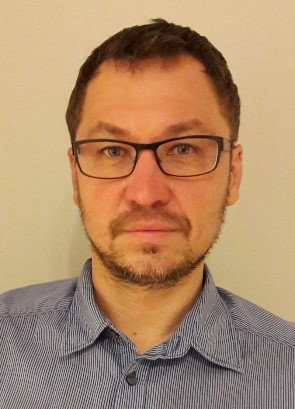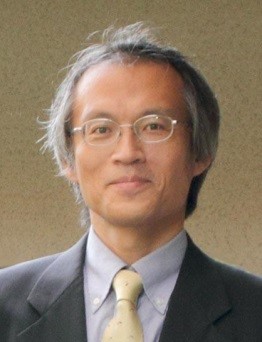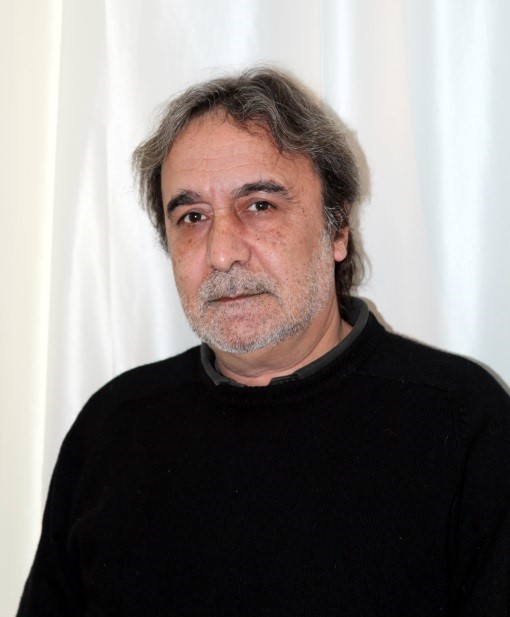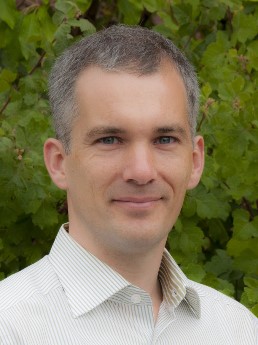Invited talks:
Michal Fulem
Department of Physical Chemistry, University of Chemistry and Technology, Prague, Czech Republic
Thermodynamic properties and phase behavior of molecular crystals – theory and experiment hand in hand
 Michal Fulem is an Associated Professor at the Department of Physical Chemistry at the Faculty of Chemical Engineering at the University of Chemistry and Technology, Prague (UCT Prague). He received his MS degree in Analytical and Physical Chemistry in 2000 and Ph.D. degree in Physical Chemistry in 2004 from UCT Prague. He then went on to do postdoctoral studies at the University of Porto, Portugal (with prof. M.J.S. Monte and prof. L.M.N.B.F. Santos, 2005-2006) and the University of Alberta, Canada (with prof. John M. Shaw, 2006-2008) and for short-term stays at NIST, USA as a guest researcher (with Dr. Robert F. Berg, 2010-2012). He is the author and co-author of more than 60 scientific papers in refereed journals. His research interests focus mainly on the study of phase behavior and thermophysical properties of organic and organometallic compounds by both experimental and theoretical methods (using electronic structure and statistical thermodynamics calculations), development of experimental set-ups and methodologies, and chemical thermodynamics. Michal Fulem has received several national and international awards among which the IACT Doctorate Award for excellence in thermodynamics (2006) and the Award of Ministry of Education, Youth and Physical Education of the Czech Republic (2004) can be mentioned.
Michal Fulem is an Associated Professor at the Department of Physical Chemistry at the Faculty of Chemical Engineering at the University of Chemistry and Technology, Prague (UCT Prague). He received his MS degree in Analytical and Physical Chemistry in 2000 and Ph.D. degree in Physical Chemistry in 2004 from UCT Prague. He then went on to do postdoctoral studies at the University of Porto, Portugal (with prof. M.J.S. Monte and prof. L.M.N.B.F. Santos, 2005-2006) and the University of Alberta, Canada (with prof. John M. Shaw, 2006-2008) and for short-term stays at NIST, USA as a guest researcher (with Dr. Robert F. Berg, 2010-2012). He is the author and co-author of more than 60 scientific papers in refereed journals. His research interests focus mainly on the study of phase behavior and thermophysical properties of organic and organometallic compounds by both experimental and theoretical methods (using electronic structure and statistical thermodynamics calculations), development of experimental set-ups and methodologies, and chemical thermodynamics. Michal Fulem has received several national and international awards among which the IACT Doctorate Award for excellence in thermodynamics (2006) and the Award of Ministry of Education, Youth and Physical Education of the Czech Republic (2004) can be mentioned.
THERMODYNAMIC PROPERTIES AND PHASE BEHAVIOR OF MOLECULAR CRYSTALS – THEORY AND EXPERIMENT HAND IN HAND
M. Fulem1
1Department of Physical Chemistry, University of Chemistry and Technology, Prague, Technická 5, 166 28 Prague 6, Czech Republic
e-mail: fulemm@vscht.cz
A knowledge of thermodynamic properties and phase stability of molecular crystals is indispensable in many applications including crystal engineering, polymorph screening in pharmaceutical research, environmental modeling, etc. As experimental determinations can never keep pace with data demand in these areas (for example, the number of compounds with available data on sublimation equilibrium is estimated to be around 1000), the ability to reliably predict thermodynamic data and phase stability of molecular crystals is of utmost importance. In addition, the theoretical methodologies may find use in cases when experimental determinations are extremely difficult or even not feasible, as for example the measurements of sublimation pressure and enthalpy of extremely low volatile compounds.
In this contribution, an overview of the current possibilities of first-principles approaches to predict thermodynamic data as a function of temperature and phase diagrams for molecular crystals with a special focus on the sublimation equilibrium is given. The performance of computational methodologies is demonstrated based on several benchmark studies performed in our laboratory. An inherent part of such studies is the development of reference experimental data with low uncertainties as they set the error bars of the theoretical calculations and play thus an important role in testing and evaluating the performance of various computational approaches. Therefore, recent activities of our research group in the development of critically assessed reference thermodynamic data for molecular crystals are also presented.
Hiroyuki Shibata
IMRAM, Tohoku University, Sendai, Japan
Thermal diffusivity measurement for metallic and oxide glasses using a laser flash method
 Hiroyuki Shibata is a Full Professor of the Institute of Multidisciplinary Research for Advanced Materials, Tohoku University. He received his BS degree in material science and engineering from Tohoku University, and Master and Dr.Eng. degrees from Tohoku University. He is the author and co-author of more than 120 scientific papers in refereed journals. He is an Associate Editor of High temperature materials and processes and he is on the editorial board of ISIJ International, the iron and steel institute of Japan.
Hiroyuki Shibata is a Full Professor of the Institute of Multidisciplinary Research for Advanced Materials, Tohoku University. He received his BS degree in material science and engineering from Tohoku University, and Master and Dr.Eng. degrees from Tohoku University. He is the author and co-author of more than 120 scientific papers in refereed journals. He is an Associate Editor of High temperature materials and processes and he is on the editorial board of ISIJ International, the iron and steel institute of Japan.
Professor Shibata has received several national and international prizes and awards including the best paper prizes in the iron and steel institute of Japan and John-Chipman Award (Iron and Steel Society in U.S.A).
THERMAL DIFFUSIVITY MEASUREMENT FOR METALIC AND OXIDE GLASSES USING A LASER FLASH METHOD
H. Shibata1, S. Sukenaga1, T. Nishi2, and H. Ohta2
1Institute of Multidisciplinary Research for Advanced Materials, Tohoku University, Sendai, Japan
2Department of Mater. Sci. and Eng., Ibaraki University, Hitachi, Japan
e-mail: shibata@tagen.tohoku.ac.jp
Thermal diffusivity and conductivity values of molten materials at elevated temperatures are required to elucidate the metal production processes, such as continuous casting, welding, and refining by developing computer simulation models. In such numerical simulation, the thermal diffusivity and thermal conductivity values of molten materials are essentially required. However, the available thermal transport properties of materials in the molten state are very limited because of the experimental difficulties at high temperature, within the best knowledge of the present authors.
A laser flash method is recognized as a versatile technique for measuring thermal diffusivity of various materials. This laser flash method was originally developed for measuring thermal diffusivity of solid sample. A front surface of a disk shaped sample is instantaneously irradiated by a laser pulse. The resultant temperature response of the back surface of the disk is measured as a function of time. The measured temperature response curve is used to estimate thermal diffusivity of the sample. We have proposed novel techniques to measure thermal diffusivity of molten metals and oxides based on the laser flash technique. The unique sample cell was developed for measurement of the molten metals, and a front heating-front detection laser flash technique was also developed to measure thermal diffusivity of molten oxides.
The main purpose of the present paper is to introduce the developed techniques and the obtained results for the molten materials, metallic glasses and oxide glasses such as Pd based alloys, Zr based alloys and silicate glasses. Then, the heat transfer mechanism will be discussed of the materials in the molten state.
Manuel J Monte
Department of Chemistry and Biochemistry, Faculty of Science, University of Porto, Porto, Portugal
Estimation of phase transition properties of halogenated benzenes
 Manuel J. S. Monte is Associate Professor of Department of Chemistry and Biochemistry of the Faculty of Science of University of Porto (FCUP). He was member of the first General Board of the University (2009-2013), Head of the Department of Chemistry (2006-2007) member of the Scientific Board of FCUP since 2006, and he is Vice-Chairman of the Representatives Council of this Faculty. He received his PhD degree (Magna cum Lauda) in Chemistry (Physical-Chemistry) in 1990 from University of Porto under the super-vision of Prof. Ribeiro da Silva. Part of his PhD work was done in the Thermodynamic Group of the University of Utrecht under the supervision of Prof. C. G. de Kruif and colleagues.
Manuel J. S. Monte is Associate Professor of Department of Chemistry and Biochemistry of the Faculty of Science of University of Porto (FCUP). He was member of the first General Board of the University (2009-2013), Head of the Department of Chemistry (2006-2007) member of the Scientific Board of FCUP since 2006, and he is Vice-Chairman of the Representatives Council of this Faculty. He received his PhD degree (Magna cum Lauda) in Chemistry (Physical-Chemistry) in 1990 from University of Porto under the super-vision of Prof. Ribeiro da Silva. Part of his PhD work was done in the Thermodynamic Group of the University of Utrecht under the supervision of Prof. C. G. de Kruif and colleagues.
He was the godfather of the Honoris Causa Doctorate of Professor Carl Djerassi by the University of Porto (2011) and has translated into Portuguese two science-in-fiction books from this author, edited by the University of Porto (Oxygen and Phallacy). He has authored a book chapter (NATO ASI Series, 1999) and has co-authored nearly 100 scientific articles published in peer reviewed journals. He was co-Editor of a special issue of Journal of Chemical Thermodynamics (2014) and he is member of the Editorial Advisory Board of this Journal.
ESTIMATION OF PHASE TRANSITION PROPERTIES OF HALOGENATED BENZENES
M. J. S. Monte1, A. R. R. P. Almeida1
1Centro de Investigação em Química, CIQ-UP, Department of Chemistry and Biochemistry, Faculty of Science, University of Porto, Portugal
e-mail: mjmonte@fc.up.pt
There are, virtually, ca. 1500 distinct benzene compounds where one or more hydrogen atoms are replaced by halogens (fluorine, chlorine, bromine, and iodine). Halogenated benzenes form a class of recognized pollutants and some of them are produced in large amounts since they find several industrial uses. Their physicochemical properties are strongly influenced by the halogen substituents.
For the prediction of the fate and transport of these contaminants in the environment accurate data of vapor pressures and of other transport properties, as the solubility in water, and partition and distribution coefficients, are needed. Some of these properties are difficult to determine experimentally for the existing compounds and are obviously impossible for those that were not synthesized yet.
This talk will address user friendly methods for accurate prediction, at the temperature 298.15 K, of standard Gibbs energies of sublimation and of vaporization (and then vapor pressures), Gibbs energies of hydration, solubility in water, and also a reasonable prediction of the temperature of fusion, for mono to hexa halogenated benzenes. Due to the weak interactions between the halogen atoms, the predictive equations of the properties referred to above don’t need to take into account the relative positions of these substituents in the respective benzene derivatives.
Acknowledgments:
Thanks are due to FCT, Lisbon, Portugal, for the financial support to Project UID/QUI/0081/2013 and to FEDER (COMPETE 2020) for the financial support to Project NORTE-01-0145-FEDER-000028. A.R.R.P.A also thanks FCT, Operational Program and European Union for the award of the postdoctoral fellowship (SFRH/BPD/97046/2013).
Douglas M. Matson
Mechanical Engineering Department, Tufts University, Medford MA, USA
In-Situ Property Measurement for Selection and Control of convection in EML Space Experiments
 Douglas M. Matson is an Associate Professor and the Program Director of the Mechanical Engineering Department at Tufts University and an Adjunct Associate Professor of the Tisch College of Citizenship and Public Service. He received his BS degrees in Chemical Engineering from Cornell University and Mechanical Engineering from California State University - Sacramento, his MS in Materials Science from UC-Davis, and his Ph.D. degree in Materials Engineering from MIT. He is a registered Professional Engineer in Chemical Engineering in California. He is the editor of a book on rapid solidification and is author or co-author of more than 35 scientific papers in refereed journals and 50 scientific and technical proceedings papers. He has co-organized 13 symposiums relating to space physical science, thermophysical property measurement and solidification phenomena. Professor Matson was an Erskine Fellow at the University of Canterbury, Christchurch NZ and visiting scientist at both the NASA Marshall Space Flight Center in Huntsville AL USA and the German Space Agency (DLR) in Köln Germany. He has numerous reduced-gravity space science opportunities including parabolic aircraft missions on the KC-135 vomit comet in Johnson Space Center in Houston Texas and the Novespace A300 Zero-G in Bordeaux-Mérignac France, drop tube experiments at Vanderbilt and at NASA, the TEXUS-49 DLR sounding rocket experiment from ESRANGE Space Center outside Kiruna Sweden, and three space experiments as TEMPUS lead scientist on the NASA shuttle Columbia. He has two ongoing space collaborations on the ISS; a thermophysical property measurement program using the JAXA Electrostatic Levitator ELF and the ESA electromagnetic levitator MSL-EML collaboration for which he serves as Speaker of the International Working Group and NASA Facility Scientist.
Douglas M. Matson is an Associate Professor and the Program Director of the Mechanical Engineering Department at Tufts University and an Adjunct Associate Professor of the Tisch College of Citizenship and Public Service. He received his BS degrees in Chemical Engineering from Cornell University and Mechanical Engineering from California State University - Sacramento, his MS in Materials Science from UC-Davis, and his Ph.D. degree in Materials Engineering from MIT. He is a registered Professional Engineer in Chemical Engineering in California. He is the editor of a book on rapid solidification and is author or co-author of more than 35 scientific papers in refereed journals and 50 scientific and technical proceedings papers. He has co-organized 13 symposiums relating to space physical science, thermophysical property measurement and solidification phenomena. Professor Matson was an Erskine Fellow at the University of Canterbury, Christchurch NZ and visiting scientist at both the NASA Marshall Space Flight Center in Huntsville AL USA and the German Space Agency (DLR) in Köln Germany. He has numerous reduced-gravity space science opportunities including parabolic aircraft missions on the KC-135 vomit comet in Johnson Space Center in Houston Texas and the Novespace A300 Zero-G in Bordeaux-Mérignac France, drop tube experiments at Vanderbilt and at NASA, the TEXUS-49 DLR sounding rocket experiment from ESRANGE Space Center outside Kiruna Sweden, and three space experiments as TEMPUS lead scientist on the NASA shuttle Columbia. He has two ongoing space collaborations on the ISS; a thermophysical property measurement program using the JAXA Electrostatic Levitator ELF and the ESA electromagnetic levitator MSL-EML collaboration for which he serves as Speaker of the International Working Group and NASA Facility Scientist.
IN-SITU PROPERTY MEASUREMENT FOR SELECTION AND CONTROL OF CONVECTION IN EML SPACE EXPERIMENTS
D. M. Matson1
1Tufts University, Medford MA, USA
e-mail: douglas.matson@tufts.edu
Measurement of accurate thermophysical properties is a major concern of the materials science community because these results will be used to optimize performance modelling across a wide variety of engineering applications. The precision of these measurements also impacts the quality of numerical modelling predictions, especially for process control. One such application is the characterization of melt stirring of molten metal during electromagnetic levitation (EML).
Of particular interest is the temperature dependence of density and viscosity for the melt. These quantities are used to characterize flow patterns and system Reynolds Number from laminar, through transitional, to turbulent flow conditions. Electrical resistivity may also be evaluated and the results are used to determine how induced internal fluid flows are produced by sample interaction with applied levitation and heating electromagnetic fields – and how the flows evolve over time. Magnetohydrodynamic (MHD) modelling thus provides the operator with a guide to select and control melt convection during space experiments on the International Space Station (ISS).
In-situ measurement of properties is critical. Thermophysical properties are measured for a given sample, under given conditions, in a unique facility operating in an environment where an experiment cannot be reset or a sample exchanged. If we know the properties for a given experiment we can have high confidence that the predictions on fluid flow during the experiment are known and controlled.
This is particularly important for understanding the influence of convection on phase selection during rapid solidification of steel alloys during recent space experiments. A new nucleation model has been proposed to explain how a metastable phase transforms to the stable phase based on an understanding of how liquid shear influences the microstructure formed during primary recalescence. Understanding this application requires in-situ measurement of thermophysical properties to predict the applied shear.
Mark B. Shiflett
Chemical and Petroleum Engineering Center for Environmentally Beneficial Catalysis, Life Sciences Research Laboratory, University of Kansas, Lawrence KA, USA
Ionic Liquids – Phase Behavior to Applications
 Mark B. Shiflett is a Distinguished Foundation Professor in the School of Engineering at the University of Kansas. Professor Shiflett has a joint appointment in the Department of Chemical and Petroleum Engineering and the Center for Environmentally Beneficial Catalysis. Professor Shiflett recently joined the University of Kansas as the final Foundation Professor in August 2016. Professor Shiflett received his Ph.D. and M.S. degrees in chemical engineering from the University of Delaware in 2001 and 1998. He received his B.S. degree (Magna cum laude) in chemical engineering from N.C. State University in 1989. Dr. Shiflett recently retired from the DuPont Company after 28 years of service. He was a Technical Fellow in the Central Research and Development organization which is located at the Experimental Station in Wilmington, Delaware. Professor Shiflett was also an adjunct professor at the University of Delaware in the Department of Chemical and Biomolecular Engineering. Professor Shiflett is an inventor on 40 U.S. patents and has published over 70 articles on his research at DuPont. He was awarded the DuPont Bolton Carothers award in 2005, the ACS Hero of Chemistry award in 2006 and the University of Delaware presidential citation in 2007 for his development of hydrofluorocarbon refrigerant mixtures to replace chlorofluorocarbons which were linked to the depletion of the Earth’s ozone layer. Three of these refrigerant mixtures were commercialized by the DuPont Company and have generated over $1 Billion in revenue for the company. Professor Shiflett was elected in 2014 to be a Fellow in the American Institute of Chemical Engineers and in 2016 to be a Division Fellow in the American Chemical Society for his significant professional accomplishments and contributions to the chemical engineering profession. Professor Shiflett received the American Institute of Chemical Engineers Institute award for Industrial Research in 2016 for the development of non-ozone-depleting refrigerants which have led to the healing of the Earth’s ozone layer, new applications using ionic liquids, an environmentally friendly TiO2 process and mentoring and educating chemical engineers. Professor Shiflett is a licensed professional engineer and his research at KU focuses on environmentally friendly, energy efficient processes and products for the chemical industry.
Mark B. Shiflett is a Distinguished Foundation Professor in the School of Engineering at the University of Kansas. Professor Shiflett has a joint appointment in the Department of Chemical and Petroleum Engineering and the Center for Environmentally Beneficial Catalysis. Professor Shiflett recently joined the University of Kansas as the final Foundation Professor in August 2016. Professor Shiflett received his Ph.D. and M.S. degrees in chemical engineering from the University of Delaware in 2001 and 1998. He received his B.S. degree (Magna cum laude) in chemical engineering from N.C. State University in 1989. Dr. Shiflett recently retired from the DuPont Company after 28 years of service. He was a Technical Fellow in the Central Research and Development organization which is located at the Experimental Station in Wilmington, Delaware. Professor Shiflett was also an adjunct professor at the University of Delaware in the Department of Chemical and Biomolecular Engineering. Professor Shiflett is an inventor on 40 U.S. patents and has published over 70 articles on his research at DuPont. He was awarded the DuPont Bolton Carothers award in 2005, the ACS Hero of Chemistry award in 2006 and the University of Delaware presidential citation in 2007 for his development of hydrofluorocarbon refrigerant mixtures to replace chlorofluorocarbons which were linked to the depletion of the Earth’s ozone layer. Three of these refrigerant mixtures were commercialized by the DuPont Company and have generated over $1 Billion in revenue for the company. Professor Shiflett was elected in 2014 to be a Fellow in the American Institute of Chemical Engineers and in 2016 to be a Division Fellow in the American Chemical Society for his significant professional accomplishments and contributions to the chemical engineering profession. Professor Shiflett received the American Institute of Chemical Engineers Institute award for Industrial Research in 2016 for the development of non-ozone-depleting refrigerants which have led to the healing of the Earth’s ozone layer, new applications using ionic liquids, an environmentally friendly TiO2 process and mentoring and educating chemical engineers. Professor Shiflett is a licensed professional engineer and his research at KU focuses on environmentally friendly, energy efficient processes and products for the chemical industry.
IONIC LIQUIDS – PHASE BEHAVIOR TO APPLICATIONS
Mark B. Shiflett, Ph.D., P.E.1
Foundation Distinguished Professor The University of Kansas
1Chemical and Petroleum Engineering Center for Environmentally Beneficial Catalysis Life Sciences Research Laboratory Building A, Office 110-F, 1501 Wakarusa Drive Lawrence, Kansas 66047, USA
e-mail: Mark.B.Shiflett@ku.edu
The history of ionic liquids (ILs) effectively started in 1914, when the physical properties of ethylammonium nitrate ([CH3CH2NH3+][NO3-], m.p. 13-14 °C) were first reported. ILs are generally defined as salts composed of discrete cations and anions with melting points below 100 °C, and many are liquid at ambient temperature. IL research has grown rapidly over the past two decades due to the realization that these materials have many unique properties such as negligible vapor pressure and outstanding solvation potential. Ionic liquids have been further emphasized by the fact that their physical and chemical properties can be finely tuned by varying both the cation and anion.
Our research has focused on accurately measuring vapor-liquid equilibria (VLE) and vapor-liquid-liquid equilibria (VLLE) and using thermodynamic models to understand the phase behavior of binary gas mixtures in ILs. This presentation will focus on the importance of characterizing the global phase behavior of gases in ionic liquids and how this can provide insight into new applications. Solubility measurements of several gases in ILs will be discussed and important experimental details regarding VLE measurements using a gravimetric microbalance and VLLE measurements using a mass-volume technique will be highlighted. VLE data have been successfully correlated with a modified Redlich-Kwong equation of state (EOS), and in certain cases (e.g. hydrofluorocarbons) the EOS predicts partial immiscibilities (LLE) with lower critical solution temperatures (LCSTs) in the fluorocarbon-rich side solutions. We have also found that gases such as CO2 can exhibit different solubility behaviors in ILs (i.e. physical and chemical absorption) and that these behaviors can be analyzed with the EOS using a simple association model and excess thermodynamic functions.
Knowledge of gas and IL phase behavior has led to several practical applications including separation of azeotropic gas mixtures, removal of CO2 from flue gas and new fluid pairs for absorption cooling. These along with other interesting examples from the literature will be discussed.
Boris Wilthan
Thermodynamics Research Center, Material Measurement Laboratory, Protiro @ National Institute of Standards and Technology, Broadway 325, CO 80305 Boulder, USA
A free online NIST/TRC Resource for Thermophysical Property Data of Metals and Alloys
 Boris Wilthan is a Physicist working at the Thermodynamic Research Center (TRC) at the National Institute of Standards and Technology (NIST) in Boulder, USA. He received his MS and Ph.D. in experimental physics from Graz University of Technology (TUG) in 2005.
Boris Wilthan is a Physicist working at the Thermodynamic Research Center (TRC) at the National Institute of Standards and Technology (NIST) in Boulder, USA. He received his MS and Ph.D. in experimental physics from Graz University of Technology (TUG) in 2005.
After working on the characterization of thermophysical properties of metals in the liquid state with a µs-pulse heating technique and Differential Scanning Calorimetry, he focused on infrared radiometric characterization of sources and materials, in particular reflectance and emittance, during his time as a Postdoc at the Optical Technology Division at NIST Gaithersburg, USA.
A researcher excellence grant from EURAMET funded his work ”Improvement and validation of techniques and methods for accurate measurements of specific heat capacities up to 2600 K.” at TUG and PTB in Braunschweig, Germany. In a staff position at PTB Berlin, he also worked on the determination of definitive thermodynamic temperatures for the melting points of high temperature fixpoints from carbon eutectics by radiometric methods for the next international temperature scale.
Since 2014 he is with TRC at NIST Boulder and is dedicated to his work to create improved, dynamically evaluated resources for thermophysical property data of metals and alloys. His work includes the design, implementation and enhancement of data capture procedures, abstraction and assessment of published properties data in this field, assessments of data quality, and predictive technologies derived primarily from original sources published in scientific literature.
He is author or co-author of more than 40 scientific peer reviewed papers and in 2011, Dr. Wilthan has received the Charles Lucks Award for significant contributions to the field of thermophysics by a young researcher from the International Thermal Conductivity Conference.
A free online NIST/TRC Resource for Thermophysical Property Data of Metals and Alloys
B. Wilthan1, V. Diky1, A. Kazakov1, E. Pfeif1, S. Townsend1, K. Kroenlein1
1Thermodynamics Research Center, Material Measurement Laboratory, Protiro @ National Institute of Standards and Technology, Broadway 325, CO 80305 Boulder, USA
e-mail: boris.wilthan@nist.gov
The increased adoption of Integrated Computational Materials Engineering (ICME) and advancements in materials simulation tools allow researchers to rapidly model and characterize new materials but require improved data reliability and interoperability. The Thermodynamics Research Center (TRC) within NIST is actively engaged in addressing this bottleneck for the thermophysical property data for metals and alloys that are needed to feed those algorithms.
Beginning in 2013, TRC began expanding its focus to include metals and alloys in support of the Materials Genome Initiative, a multi-agency effort to support the discovery, manufacturing, and deployment of advanced materials twice as fast, at a fraction of the cost.
The presented first product of this effort is a data service that provides free access to an online resource of well-characterized experimental thermophysical property data with documented provenance and with quantified reliabilities expressed as uncertainty. This tool is publicly accessible at http://trc.nist.gov/metals_data.
This talk covers the overall methodologies required to efficiently and effectively convert information from data as presented in the open literature into structured, well-vetted datasets that can be then used as inputs for very large scale efforts in modelling, property-based literature searches or improving the quality of published information and preventing the propagation of erroneous data. It will furthermore include our progress in developing an XML standard to disseminate and share these data with the broader community
website administration by:
Thomas Leitner

